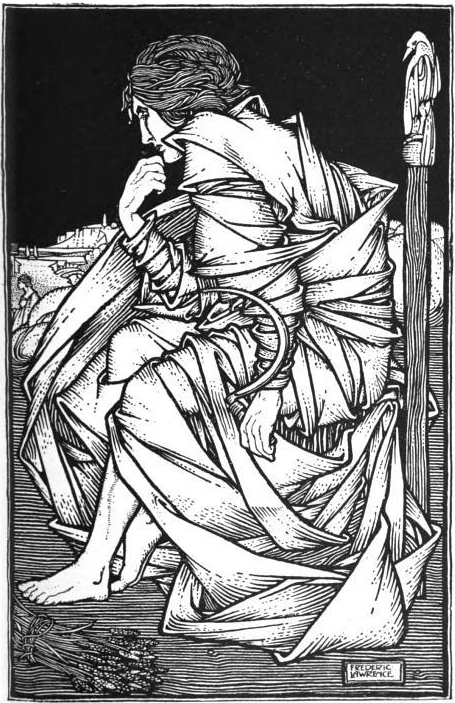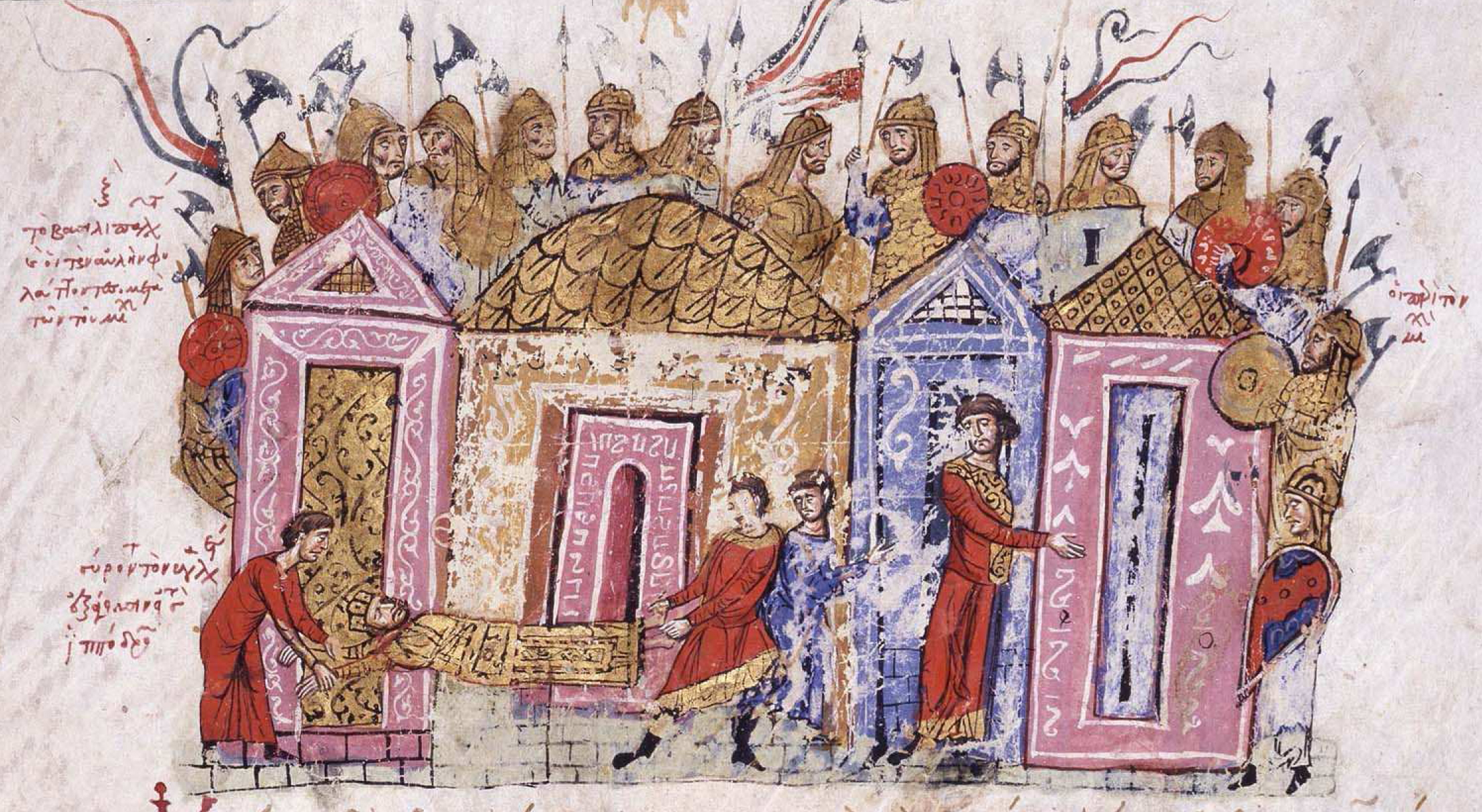|
Svíar
The Swedes (; Old Norse: ''svíar,'' ) were a North Germanic tribe who inhabited Svealand ("land of the Swedes") in central Sweden. Along with Geats and Gutes, they were one of the progenitor groups of modern Swedes. They had their tribal centre in Gamla Uppsala. The Roman historian Tacitus was the first to write about the tribe in his ''Germania'' from AD 98, referring to them as the ''Suiones''. Locally, they are possibly first mentioned by the Kylver Stone in the 4th century. Jordanes, in the 6th century, mentions ''Suehans'' and ''Suetidi''. These names likely derive from the Proto-Indo-European root * s(w)e, meaning "one's own". ''Beowulf'' mentions the Swedes around 1000 A.D. According to early sources such as the sagas, especially ''Heimskringla'', the Swedes were a powerful tribe whose kings claimed descendence from the god Freyr. During the Viking Age they constituted the basis of the Varangian subset, the Norsemen that travelled eastwards (see Rus' people). The scho ... [...More Info...] [...Related Items...] OR: [Wikipedia] [Google] [Baidu] |
Freyr
Freyr (Old Norse: 'Lord'), sometimes anglicized as Frey, is a widely attested Æsir, god in Norse mythology, associated with kingship, fertility, peace, prosperity, fair weather, and good harvest. Freyr, sometimes referred to as Yngvi-Freyr, was especially associated with Sweden and seen as an ancestor of the Yngling, Swedish royal house. According to Adam of Bremen, Freyr was associated with peace and pleasure, and was represented with a phallus, phallic statue in the Temple at Uppsala. According to Snorri Sturluson, Freyr was "the most renowned of the æsir", and was venerated for good harvest and peace. In the mythological stories in the Icelandic books the ''Poetic Edda'' and the ''Prose Edda'', Freyr is presented as one of the Vanir, the son of the god Njörðr and Sister-wife of Njörðr, his sister-wife, as well as the twin brother of the goddess Freyja. The gods gave him Álfheimr, the realm of the Álfar, Elves, as a teething present. He rides the shining Norse dwarves, ... [...More Info...] [...Related Items...] OR: [Wikipedia] [Google] [Baidu] |
Västergötland
Västergötland (), also known as West Gothland or the Latinized version Westrogothia in older literature, is one of the 25 traditional non-administrative provinces of Sweden (''landskap'' in Swedish), situated in the southwest of Sweden. Västergötland is home to Gothenburg, the second largest city in Sweden, which is situated along a short stretch of the Kattegat strait. The province is bordered by Bohuslän, Dalsland, Värmland, Närke, Östergötland, Småland and Halland, as well as the two largest Swedish lakes Vänern and Vättern. Victoria, Crown Princess of Sweden is Duchess of Västergötland. Administration The provinces of Sweden serve no administrative function. Instead, that function is served by counties of Sweden. From the 17th century up until 31 December 1997, Västergötland was divided into Skaraborg County, Älvsborg County and a minor part of Gothenburg and Bohus County. From 1 January 1998 nearly all of the province is in the newly created Väs ... [...More Info...] [...Related Items...] OR: [Wikipedia] [Google] [Baidu] |
Västgötalagen
( or ) or the Västgöta (Westrogothic) law is the oldest Swedish text written in Latin script and the oldest of all Swedish provincial laws.The Scanian law is older, but Scania was not incorporated into Sweden until late 17th century, and it is thus counted as a Danish law. It was compiled in the early 13th century, probably at least partly at the instigation of Eskil Magnusson and was the code of law used in the provinces of Västergötland and Dalsland and in Mo härad during the latter half of that century. The earliest complete text is dated 1281. Small fragments of an older text have been dated 1250. This legal code exists in two versions, and (the Elder and Younger Westrogothic law, respectively). A first printing in modern times was published by and Carl Johan Schlyter in 1827 (which made the text the subject of the earliest known stemma), and a new edition by in 1976. The oldest manuscript of contains other material added by a priest called Laurentius in Ved ... [...More Info...] [...Related Items...] OR: [Wikipedia] [Google] [Baidu] |
Varangian Runestones
The Varangian Runestones are runestones in Scandinavia that mention voyages to the East () or the Eastern route (), or to more specific eastern locations such as ''Garðaríki'' in Eastern Europe. There are also many additional runestones in Scandinavia that talk of eastward voyages such as the Greece Runestones, Italy Runestones, and inscriptions left by the Varangian Guard. Other runestones that deal with Varangian expeditions include the Serkland Runestones (dealing with expeditions to the Middle East) and the Ingvar Runestones (erected in honor or memory of those who travelled to the Caspian Sea with Ingvar the Far-Travelled). There is also a separate article for the Baltic expeditions runestones. In addition, there were also voyages to Western Europe mentioned on runestones that are treated in the articles Viking Runestones, England Runestones and Hakon Jarl Runestones. Most of the runestones were raised during the Christianization of Scandinavia, Christianization of the 11t ... [...More Info...] [...Related Items...] OR: [Wikipedia] [Google] [Baidu] |
Varangian Guard
The Varangian Guard () was an elite unit of the Byzantine army from the tenth to the fourteenth century who served as personal bodyguards to the Byzantine emperors. The Varangian Guard was known for being primarily composed of recruits from Northern Europe, including mainly Norsemen from Scandinavia but also Anglo-Saxons from England. The recruitment of distant foreigners from outside Byzantium to serve as the emperor's personal guard was pursued as a deliberate policy, as they lacked local political loyalties and could be counted upon to suppress revolts by disloyal Byzantine factions. The Rus' people, Rus' provided the earliest members of the Varangian Guard. They were in Byzantine service from as early as 874. The Guard was first formally constituted under Emperor Basil II in 988, following the Christianization of Kievan Rus' by Vladimir I of Kiev. Vladimir, who had recently taken control of Kiev with an army of Varangian warriors, sent 6,000 men to Basil as part of a military ... [...More Info...] [...Related Items...] OR: [Wikipedia] [Google] [Baidu] |
Estonian Language
Estonian ( ) is a Finnic language and the official language of Estonia. It is written in the Latin script and is the first language of the majority of the country's population; it is also an official language of the European Union. Estonian is spoken natively by about 1.1 million people: 922,000 people in Estonia and 160,000 elsewhere. Classification By Convention (norm), conventions of historical linguistics, Estonian is classified as a part of the Finnic languages, Finnic (a.k.a. Baltic Finnic) branch of the Uralic languages, Uralic (a.k.a. Uralian, or Finno-Ugric languages, Finno-Ugric) language family. Other Finnic languages include Finnish language, Finnish and several endangered languages spoken around the Baltic Sea and in northwestern Russia. Estonian is typically subclassified as a Southern Finnic language, and it is the second-most-spoken language among all the Finnic languages. Alongside Finnish, Hungarian language, Hungarian and Maltese language, Maltese, Estonian is ... [...More Info...] [...Related Items...] OR: [Wikipedia] [Google] [Baidu] |
Finnish Language
Finnish (endonym: or ) is a Finnic languages, Finnic language of the Uralic languages, Uralic language family, spoken by the majority of the population in Finland and by ethnic Finns outside of Finland. Finnish is one of the two official languages of Finland, alongside Swedish language, Swedish. In Sweden, both Finnish and Meänkieli (which has significant mutual intelligibility with Finnish) are official minority languages. Kven language, Kven, which like Meänkieli is mutually intelligible with Finnish, is spoken in the Norway, Norwegian counties of Troms and Finnmark by a minority of Finnish descent. Finnish is morphological typology, typologically agglutinative language, agglutinative and uses almost exclusively Suffix, suffixal affixation. Nouns, adjectives, pronouns, Numeral (linguistics), numerals and verbs are inflection, inflected depending on their role in the Sentence (linguistics), sentence. Sentences are normally formed with subject–verb–object word order, alth ... [...More Info...] [...Related Items...] OR: [Wikipedia] [Google] [Baidu] |
Roden, Sweden
Roden (roðer, "rowing") is the old designation of the coastal areas of Svealand (the yellow areas in the map), that in wartime would man and equip the ships that sailed out in Leidang, ledung. It was not only the eastern part of the province of Uppland that was called "Roden" (called Sæland by Snorri Sturluson) but also other provinces by the Swedish "East sea" (Baltic Sea), like the coastal areas of the province Östergötland. It was called ''roþi'' by Northmen in the 11th century that wrote down the words on the Uppland Runic Inscription 11. The scholarly consensus is that the Rus' people originated in what is currently coastal East Middle Sweden, eastern Sweden around the eighth century and that their name has the same origin as Roslagen in Sweden (with the older name being ''Roden''). According to the prevalent theory, the name ''Rus'', like the Proto-Finnic name for Sweden (''*roocci''). is derived from an Old Norse term for "the men who row" (''rods-'') as rowing was t ... [...More Info...] [...Related Items...] OR: [Wikipedia] [Google] [Baidu] |
Roslagen
Roslagen is the name of the coastal areas of Uppland province in Sweden, which also constitutes the northern part of the Stockholm archipelago. Historically, it was the name for all the coastal areas of the Baltic Sea, including the eastern parts of lake Mälaren, belonging to Svealand. The name was first mentioned in the year 1493 as "Rodzlagen". Before that the area was known as ''Roden''. Roden had a ''skeppslag'' (roughly translated: ship district), the coastal equivalent to the inland Hundreds. When the king would issue a call to leidang, the Viking Age equivalent of military conscript service, the ''skeppslag'' in Roden was responsible for raising ships for the leidang navy. The name comes from the ''rodslag'', which is an old coastal Uppland word for a rowing crew of warrior oarsmen. Etymologically, Roden, or Roslagen, is the source of the Finnish and Estonian names for Sweden: and .The Russian Primary Chronicle: Laurentian Text Translated by O. P. Sherbowitz-Wetzor ... [...More Info...] [...Related Items...] OR: [Wikipedia] [Google] [Baidu] |
East Middle Sweden
East Middle Sweden () is a National Areas of Sweden, national area () of Sweden. The national areas are a part of the NUTS statistical regions of Sweden. Geography The region is situated in the central part of the Sweden, close to the Stockholm County, county and the Metropolitan Stockholm, metropolitan area of Stockholm. It borders with the of North Middle Sweden, West Sweden, Småland and the islands and Stockholm (National Area), Stockholm. The most populous cities are Uppsala, Västerås, Örebro, Linköping, Norrköping, Eskilstuna, Nyköping, Motala, Enköping and Katrineholm. Subdivision East Middle Sweden includes 5 Counties of Sweden, counties: * Örebro County, Örebro (seat: Örebro) * Östergötland County, Östergötland (seat: Linköping) * Södermanland County, Södermanland (seat: Nyköping) * Uppsala County, Uppsala (seat: Uppsala) * Västmanland County, Västmanland (seat: Västerås) Economy The Gross domestic product (GDP) of the region was 76.258 billion ... [...More Info...] [...Related Items...] OR: [Wikipedia] [Google] [Baidu] |
Rus' People
The Rus, also known as Russes, were a people in early medieval Eastern Europe. The scholarly consensus holds that they were originally Norsemen, mainly originating from present-day Sweden, who settled and ruled along the river-routes between the Baltic and the Black Seas from around the 8th to 11th centuries AD. The two original centres of the Rus' were Ladoga (''Aldeigja''), founded in the mid-8th century, and Rurikovo Gorodische (''Holmr''), founded in the mid-9th century. The two settlements were situated at opposite ends of the Volkhov River, between Lake Ilmen and Lake Ladoga, and the Norsemen likely called this territory ''Gardar''. From there, the name of the Rus' was transferred to the Middle Dnieper, and the Rus' then moved eastward to where the Finnic tribes lived and southward to where the Slavs lived. The name '' Garðaríki'' was applied to the newly formed state of Kievan Rus', and the ruling Norsemen along with local Finnic tribes gradually assimilated in ... [...More Info...] [...Related Items...] OR: [Wikipedia] [Google] [Baidu] |






